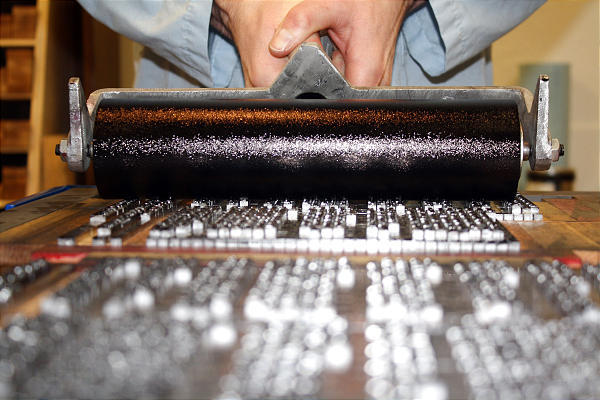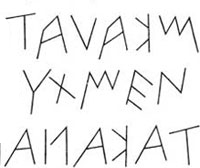

1816: The first sans-serif font makes a subtle entrance as one
line of a book.

1837: Godefroy Engelmann is credited with bringing lithography to France,
 |
| Godefroy Engelmann, Courcy Castle, lithograph, 1826 |
1861: Williams Morris sets up what is known as the first
art-decorating firm.
 |
| Design for Trellis wallpaper, 1862 |
1880: The Development of the halftone screen allows for
the 1st photo printed with a full range of tones.

1890: The Art Nouveau movement begins.

 |
| The Peacock Skirt, by Aubrey Beardsley, (1892) |

“I Want YOU for the U.S. Army” poster.

1919: The Bauhaus, a German school, is founded, eventually providing the framework for modern design.
1940: First issue of Print Magazine printed.
1922- William Addison Dwiggins coins the term “Graphic Design”
1957: Max Miedinger designs Neue Haas Grotesk font, later renamed Helvetica.
1969: Douglas Engelbart develops first computer mouse, setting the stage for the future tool of graphic design.
19th-21st
Century
Influential Graphic
Designers
Graphic Design-1800's
Graphic Design: 1917-1969
1984: Apple releases the first Macintosh computer, featuring bitmap graphics.
1985: Aldus, formed by Paul Brainerd, develops PageMaker software.
Brainerd also coins the phrase “desktop publishing”. In the same year, New York firm Manhattan Design creates the MTV logo.
Mid-late 1980’s: The arrival of desktop publishing and
graphic art software applications is introduced.
Graphic Design: 1917-1969
Graphic Design: 1917-2000
1990: Photoshop version 1 released, and physicist Tim Berners-Lee develops the world wide web, along with HTML and the concept of website addresses.
Mid 1990s-Current: The following programs are developed and become a important tool to modern designers:
Adobe Photoshop (a raster-based program for photo editing),
Adobe Illustrator (a vector-based program for drawing),
Adobe InDesign (a page layout program),
Adobe Dreamweaver (for Web page design). Another major page layout tool QuarkXpress (a product of Quark, Inc.,)
David Carson is most widely known for his anti-swiss (read: hap-hazard) style.
He places type and images anywhere on the page – over pictures, over itself, even up-side-down.
His work is certainly reactionary to the modernist era, but his magazines, specifically Ray Gun, have become iconic and are still praised for their originally.

David Carson-

Chip Kidd
Chip Kidd is a writer and designer & currently working in New York City
He primarily designs book jackets, & has worked for Alfred A. Knopf since 1986.
Kidd also designs for Pantheon, a subsidiary of Knopf, as an editor of books of comics.
In 1997, Kidd received the International Center of Photography’s award for “Use of Photography in Graphic Design” and in 1998, he was made a member of the Alliance Graphique Internationale
Kidd's Work:
In 1991 Scher joined Pentagram as Partner, developing identities, packaging and signage for a variety of major clients including The New York Times Magazine, Bloomberg, Target, Jazz at Lincoln Center, Madison Square Park, Tiffany & Co., Citibank and The Public Theater.
In 1998 she was inducted into the Art Directors Hall of Fame and in 2000 she won the Chrysler Award for Innovation in Design
In the 1970s and 80s Paula Scher begun her career as Art Director
for CBS records, where she designed posters, ads and over 150 album covers a year.
Paula Scher
After school, Bierut landed his first job at the prestigious Vignelli Associates design firm, where he become VP of Design. He worked on clients such as Benetton and United Airlines.
After 10 years at Vigenlli, Bieurt moved on to another world-wide industry giant, Pentagram.
On top of creating work for for clients such as: Saks Fifth Avenue, Brooklyn Academy of Music, Yale School of Architecture, Princeton University, Guitar Hero, The New York Jets, he is also an advocate for design: writing books on design, as a co-founder of Design Observer and as a teacher/lecturer all over the world.

Michael Bierut
He began studying design at the University of Cincinnati College of Design.
He had his first internship with AIGA medalist Chris Pullman.
Michael Bierut
Casey's Work:
Jacqueline Casey (RIP)
Ruth Ansel
Casey's work acknowledges the influence of the Grid established by the post-war graphic design masters in Switzerland.
As Director of Design Services many of her posters have been created to publicize exhibitions organized by the MIT Committee on the Visual Arts.
She often uses strong elemental imagery, manipulated by letter forms.
Exhibitions of her work have been held at MIT, at the Chelsea School of Art, London (1978) and the London College of Printing. (1980)." A collection of 99 posters designed by Jacqueline S. Casey for events and activities at MIT from 1963 to 1990 was donated to RIT in 1992 by the MIT Museum at the request of Ms. Case
Casey passed away in 1992 after a long struggle with cancer.
Ansel also created film titles for numerous books and directed fashion ad campaigns for Versace, Club Monaco and Karl Lagerfield.
Even though Ruth Ansel worked as Art Director for the New York Times Magazine in the 1970s and Art Director for House and Garden, Vanity Fair and Vogue in the 1980s, those prestigious titles were only part of her creative output during her career.
Jacqueline Casey trained at Massachusetts College of Art before working as a fashion illustrator and advertising, editorial and interior designer.
In 1955 she joined the Office of Publications (Design Services Office) at Massachusetts Institute of Technology (MIT) working with Muriel Cooper who was then Design Director.
No comments:
Post a Comment